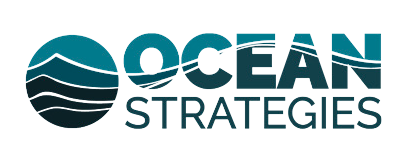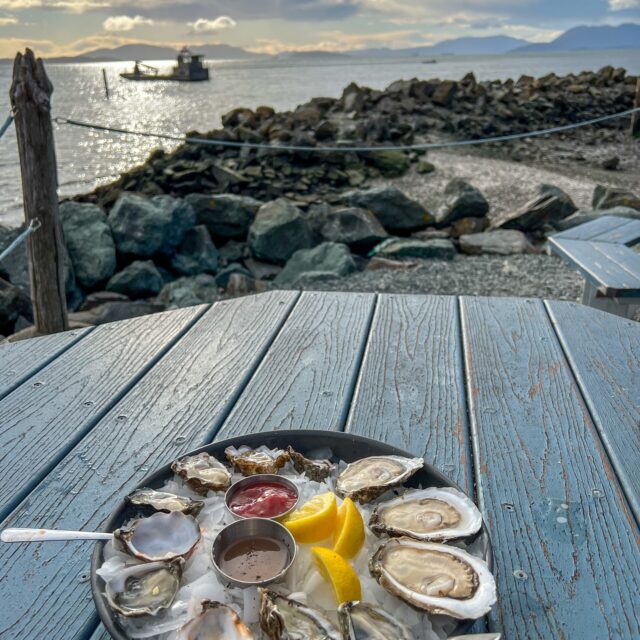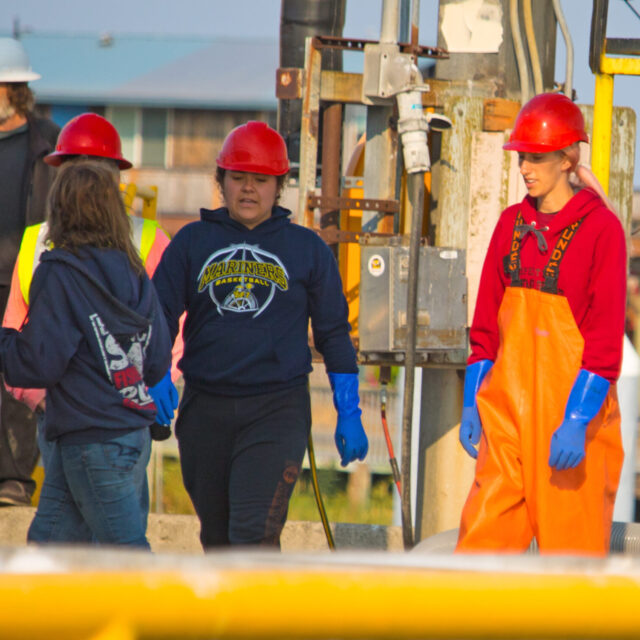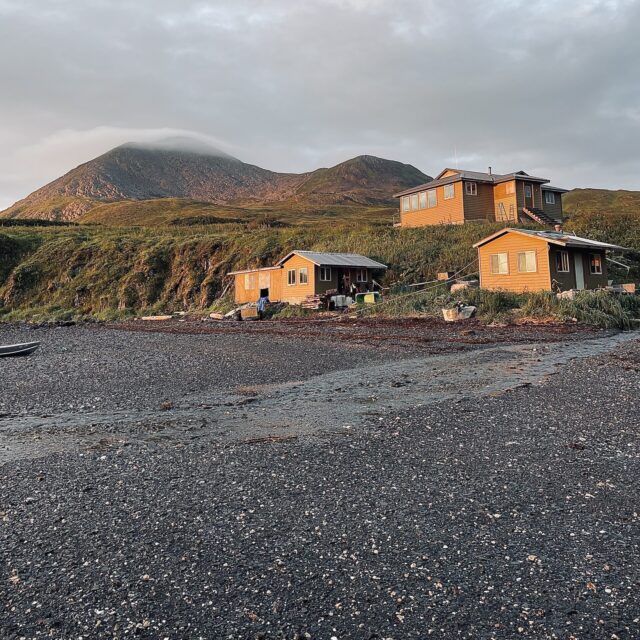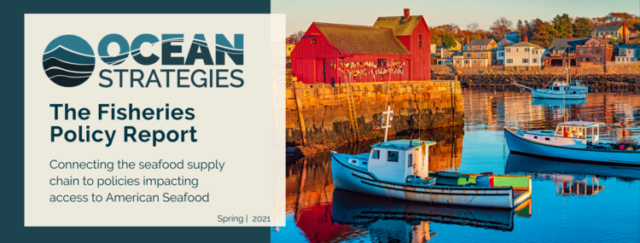
The Ocean Strategies Fisheries Policy Report provides timely policy and industry updates that connect America’s sustainable seafood supply chain — including grocers, restaurants, distributors, transportation and the many other businesses that depend upon seafood access.
Not already signed-up? Receive future updates by signing up.
Seafood Supply Chain
Seafood Arena Partners Seek Funding For National Seafood Council
Leaders from across the seafood industry — including wild-capture, aquaculture, grocers, processing, marketing, NGO’s and more — are looking to capitalize on seafood’s explosive retail growth during the pandemic by asking Congress for $25 million to fund a nationwide seafood public education campaign. The National Seafood Council will develop and execute a holistic seafood marketing and education campaign to build a more resilient seafood sector, improve public health, and foster a healthier planet.
U.S. Dietary Guidelines recommend Americans eat two servings of seafood per week, almost double the national average. If Congress funds the National Seafood Council and the program is successful, it will improve Americans’ understanding of seafood as the global leader of healthy proteins and environmental sustainability. A major goal of this expanded seafood education would be Americans meeting those Dietary Guidelines by doubling their consumption. This could have major impacts on the entire seafood supply chain, from fishing-dependent communities and harvesters to the retail counter.
Leading this effort is the Seafood Nutrition Partnership. SNP is the leading non-profit organization in the U.S. building awareness of the health and nutritional benefits of seafood. If you are interested to learn more or join their Task Force, contact Margaret Henderson, Director of Corporate Partnership at SNP.
Seafood Prime Time:
Alaskan Fisherman Talks Sustainable seafood with NBC’s The Today Show
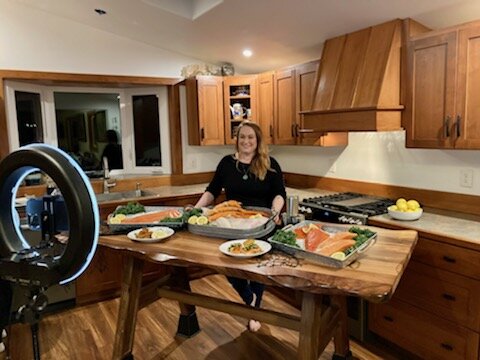
As seafood enters the spotlight in grocery stores around the country, it’s also earning more attention from mainstream national media. This spring NBC’s Today Show featured sustainable Alaskan seafood — a testament to the major seafood renaissance taking place in American kitchens.
Ocean Strategies’ own Hannah Heimbuch, a lifelong Alaskan commercial fisherman, walked viewers through what makes seafood sustainable, how to find it and how to cook it. The Alaska Seafood Marketing Institute led development of the feature, part of their efforts to increase seafood on the screen and in the kitchen on the heels of a major consumer uptick.
Among the many lifestyle changes spurred by Covid-19 is a renewed interest in cooking seafood at home. Supply chain businesses hope that valuable trend is here to stay, and garnering prime time attention bodes well for America’s seafood industry. It also indicates growth of consumer awareness, and retailers could expect an increase in seafood demand, and within it an increase in discerning buyers looking for sustainably sourced products.
Presidential Report
Preliminary Report Released for 30×30 Conservation Initiative
A report released in early May offers insight into the Biden administration’s vision for the so-called 30×30 initiative. The report — Conserving and Restoring America the Beautiful — includes recommendations and a call to action around the initiative’s aim to conserve, connect, and restore 30% of America’s lands and waters by 2030.
The report outlines eight key principles guiding these conservation efforts, including:
-
Pursuing a collaborative and inclusive approach to conservation;
-
Conserving America’s lands and waters for the benefit of all people;
-
Supporting locally led and locally designed conservation efforts;
-
Honoring Tribal sovereignty and supporting the priorities of Tribal Nations;
-
Pursuing conservation and restoration approaches that create jobs and support healthy communities;
-
Honoring private property rights and supporting the voluntary stewardship efforts of private landowners;
-
Using science as a guide; and
-
Building on existing tools and strategies with an emphasis on flexibility and adaptive approaches.
The report garnered support from commercial fishing voices, many of whom urged the administration to focus on promoting climate resiliency of our nation’s fisheries and fishing-dependent communities through infrastructure investments and policy action.
Industry leaders like Seafood Harvesters of America released statements in support of the administration’s vision for a collaborative, science-based and stakeholder-driven approach — one that acknowledges the vital role commercial harvesters play in conservation efforts.
“We share President Biden’s conservation vision, which recognizes that many uses of our lands and waters can be consistent with the long-term health and sustainability of natural systems,” said Leigh Habegger, executive director of the Seafood Harvesters of America, based in Washington, D.C. “America’s seafood harvesters welcome the opportunity… to ensure our oceans are healthy and productive, even in the face of climate change.”
The report will now be sent to the National Climate Task Force. It instructs NOAA to expand the National Marine Sanctuaries System and National Estuarine Research Reserve System, and to work closely with regional fishery management councils to further fish population restoration efforts — a condition strongly supported by seafood harvesters.
Prioritizing collaboration with our nation’s essential food-producing industries and their management processes is a positive step forward in securing consumer access to American seafood, and sustaining the seafood supply chain.
Stay Informed: Subscribe to Ocean Strategies updates for ongoing information on this developing issue.
What We’re Watching
Take a swig of coffee. There are more ongoing federal policy items impacting seafood supply chain access.
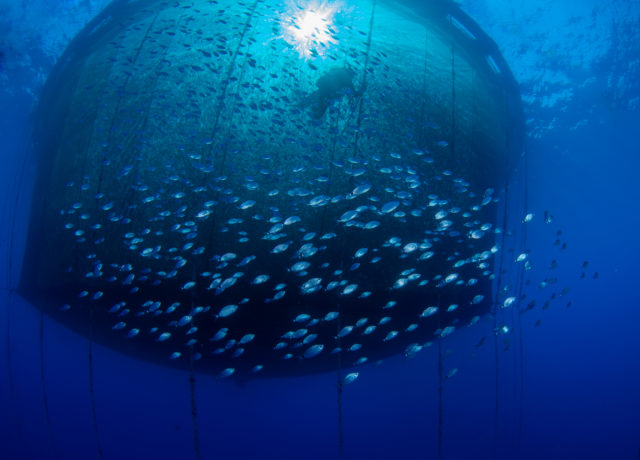
Update: Aquaculture Development in U.S. Federal Waters For the past several months, NOAA’s Aquaculture Program has conducted outreach to the general public and Fishery Management Councils on siting for expanded aquaculture development. As part of the Trump Administration’s Executive Order for enhancing the competitiveness of all U.S. seafood, NOAA was tasked with streamlining permitting for domestic aquaculture by identifying ten geographic areas as potential development sites. The current analysis focuses on two of these Aquaculture Opportunity Areas (AOA).
As America develops aquaculture policies, there is a clear need to integrate diverse stakeholder voices — including representatives of America’s wild capture fisheries and seafood supply chain. The agency received a mix of support and opposition from stakeholders in this first comment period — including concerns about water quality, marine mammal interactions, impacts to wild-capture fisheries, and a variety of environmental factors such as disease and effects from farmed stock escapes. These Aquaculture Opportunity Areas (AOA) will be evaluated using a science-based siting analysis, including stakeholder input. The EO lays out a five-year timeline for identifying AOAs, two each year.
The first two AOAs are in federal waters off Southern California and the Gulf of Mexico. Recent timeline updates from NOAA include: – Late summer / early fall 2021: The National Centers for Coastal Ocean Science (NCCOS) will publish the AOA Atlas of their siting analysis of the Southern California and Gulf of Mexico areas. The Programmatic Environmental Impact Statement (PEIS) process will begin. – Fall 2021: NOAA will announce its selection of the next two AOAs under consideration. A new public comment period will open for stakeholders to provide input on these new areas and what areas to consider next.
Stay Informed: NOAA will release a Notice of Intent for each PEIS and a Request for Information regarding the new AOA selections on their website by this fall. Check back in to see when new comment periods open. Seafood supply chain stakeholders are encouraged to provide input.
USDA announces plan for American seafood purchases
Last week the USDA announced its commitment to purchase up to $70.9 million in American seafood to support its food assistance programs — a Covid-relief spending request supported by American harvesters and processors as a part of bolstering the industry through exacerbated market fluctuations.
This is the largest purchase of seafood by the USDA in history. Across the country, businesses have refined strategies for remaining afloat through the major workplace and market impacts of Covid-19. That includes advocating for federal investments in both relief and resiliency efforts.
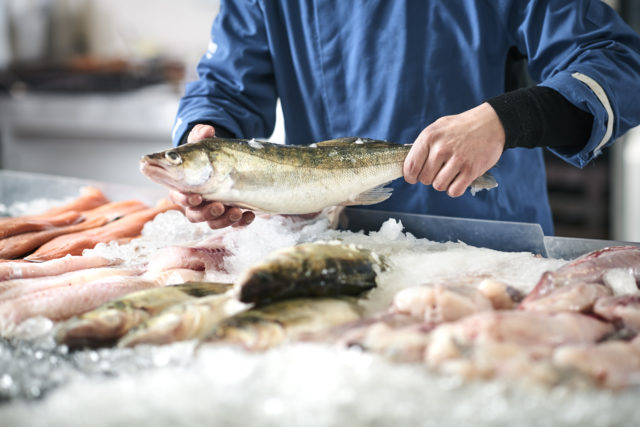
Seafood monitoring legislation tackling illegal practices Earlier this month, Congressman Jared Huffman (D-CA) and Garret Graves (R-LA) introduced the Illegal Fishing and Forced Labor Prevention Act. This legislation strengthens the Seafood Import Monitoring Program (SIMP) by recognizing that forced labor constitutes an illegal, unreported, and unregulated (IUU) fishing practice. The legislation requires an increase to seafood import traceability, however, the program’s current effectiveness remains unclear. Many domestic harvesters are concerned that lack of clarity and established benchmarks could result in unnecessary bureaucracy. Enacted in 2018, SIMP is run by NOAA Fisheries and traces seafood from its origin to entry into the U.S., in an effort to stop IUU seafoods from entering the country.
Supporters of the program — including domestic shrimp and crab fishermen — are eager to curb IUU foreign products from entering U.S. marketplaces as they undermine the value of those domestic harvests. Regulated under strong state and federal fisheries management such as the Magnuson-Stevens Act, U.S. fisheries largely prevent IUU fishing in our own waters. However, U.S. consumers unwittingly purchase enormous amounts of imported IUU-fished seafood each year, especially shrimp, due to weak monitoring. While many domestic fishermen support import monitoring for these reasons, they are also concerned about broadening SIMP before NOAA releases an assessment of the current program.
Strengthening SIMP can provide consumers greater confidence that the seafood they are eating is not subject to human trafficking and forced labor. Importantly, consumers can feel confident in seafood harvested domestically, as 91% of U.S. fisheries are not overfished or subject to IUU practices.
Fisheries Technology Survey
Calling all fishermen from the Gulf of Mexico, South Atlantic, Western Pacific and New England regions — your responses are needed!
Seafood Harvesters of America has teamed up with industry partners, NOAA scientists and researchers, and Conservation X Labs researchers to develop a survey to help identify technology needs in the commercial fishing industry. The purpose of this survey is to determine the highest priority conservation technology needs for commercial fishermen across the nation. Commercial fishing can benefit from the advances in technology that have been observed in other industries over the last decades, and many of these technologies can be applied in innovative ways to increase sustainability, efficiency, and safety in commercial fisheries.
Fishermen and those who directly work in the fishing industry are able to take this survey. Few responses have been gathered from the Gulf of Mexico, South Atlantic, Western Pacific, and New England regions — fishermen in these areas are strongly encouraged to provide input.
Take the Fisheries Technology Survey here.
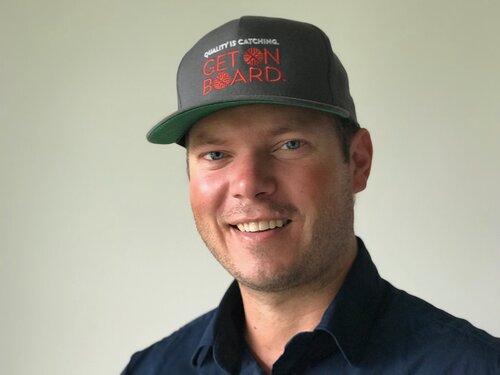
Industry Logbook
Q & A with Andy Wink
Ocean Strategies called Andy Wink — Executive Director of the Bristol Bay Regional Seafood Development Association — to learn more about the world’s largest salmon fishery. We talk about the BBRSDA’s new Fast. Wild. Easy. marketing campaign, protecting Bristol Bay from Pebble Mine and how the BBRSDA is helping to keep communities and fishermen safe from Covid-19.
Q: Andy, thanks for talking with us. We always get started with the tough questions first, so let’s get to it: Grilled, baked, seared or smoked sockeye salmon. What’s your favorite way to cook and eat it, and why?
A: This is a hard question because I like sockeye salmon cooked all sorts of different ways. I love it seared, grilled, baked and smoked salmon is awesome. What I’m really looking forward to this summer is having fresh sockeye with a strawberry balsamic salad. This recipe is super easy to make and it tastes amazing. You can find that and more recipes at bristolbaysockeye.org. There’s lots of great information there about the Bristol Bay fishery and we have lots of attractive marketing assets for folks to use, such as grocers, direct marketers, distributors, and really just anybody else who is selling Bristol Bay sockeye.
Also, we do have a new Fast. Wild. Easy marketing campaign that just launched — it starts off with four recipes and like the name says, they’re fast, use wild sockeye, and are super easy. We know consumers are really going to dig it.
Q: Can you break down the BBRSDA for us? How are you funded and what do you do?
A: We are one of two regional seafood development associations in Alaska, the other being in the Copper River area. In the early 2000’s the State of Alaska set up a framework for fishermen to have their own organizations that are self-funded. The largest gear group in Bristol Bay is the driftnet fishermen, and they elected to tax themselves 1% and that money funds BBRSDA to work on projects and activities to increase the value of the salmon resource. We work on behalf of the commercial fishermen of Bristol Bay to holistically make the resource as sustainable as possible and to get the most value out of it — not just for fishermen but for everyone in the supply chain.
Q: We know that Alaska’s salmon fisheries are sustainable and abundant, and the Bristol Bay salmon season supplies over 50% of the world’s supply of sockeye salmon. The season kicks off next month, what can retailers, restaurants and consumers expect for this upcoming salmon season?
A: Knock on wood, but we’re hoping to have another bumper harvest. We’ve had a string of years where the fleet has caught over 200 million pounds, or very close to it. The forecast this year is roughly in line with that 200 million pound mark, predicting a harvest of 37 million sockeye in Bristol Bay. In recent years we’ve been exceeding that, but it’s important for readers to know that fishery biologists and managers are counting fish literally as they go upstream. So, when we exceed our forecast, it means we are still making sure that plenty of salmon get up our rivers to spawn and repopulate stocks for future years.
As far as the 2021 season — we’ve seen the average size of sockeye decline in recent years. About five to ten years ago the average weight of a sockeye was six pounds and now it’s closer to five pounds. But despite the size, sockeye are still highly abundant in Bristol Bay, and we are monitoring the science. Smaller fish produce smaller fillets, but that just means that fillets are a little wider to get that 4-8 ounce portion size. One of the helpful things about smaller fillets is they cook faster and more evenly. However, we are also encouraging retailers and consumers to cook salmon whole or as steaks. We have been working with grocery chains that have had great success with selling headed and gutted sockeye from their seafood counters. So, there’s plenty of ways customers can use smaller fish if that’s what we end up with this year. As far as size goes, we get what we get. They’re still a tremendously tasty and healthy fish, which can be enjoyed many different ways.
Some retailers we’ve collaborated with include Costco, Wegmans, Albertsons, QFC, Raley’s, King Soopers, and Hy-Vee. We also have a Fish Finder on our website that folks can use to search for wild Bristol Bay sockeye to purchase in their area.
Q: Besides marketing, the BBRSDA is highly involved in protecting the Bristol Bay fishery from Pebble Mine and preparing safety guidelines to keep communities and fishermen safe during the global pandemic. Can you give our readers an update and some ways they can be involved?
A: The straightforward way folks can help protect the sustainability and abundance of the Bristol Bay fishery is to get involved in fighting Pebble Mine. You know, there’s not a good track record of large-scale mines coexisting with wild salmon fisheries. Pebble Mine would be one of the largest gold and copper mines in the world, and it would be situated at the headwaters of the world’s most productive wild salmon fishery on Earth. It is an extremely dangerous proposition. With all the fish caught in Bristol Bay that gets sold around the U.S. and globally — a lot of people stand to be affected here. So folks should let their members of Congress know that Bristol Bay sockeye is important to their business and their customers — whether it’s in Seattle or Savannah, reach out to legislators to say that Congress must take action and enact 404(c) of the Clean Water Act to veto the Pebble Mine. We also would like to see long-term protections implemented via legislation because the world’s most productive salmon run should not be subject to whatever political winds are blowing from season to season. The salmon resource has existed since before recorded time, and it needs to be there for future generations. We owe it to ourselves, our businesses, and the people that rely on this fishery, but we also owe it to all the people that come after us.
The Stop Pebble Mine campaign has more information on how to help and many major businesses have stood up.
In terms of Covid-19 safety and operations, last year’s season was a big success. Prior to June 2020, when the salmon season kicked off, there was so much fear and anxiety about how to safely operate Alaska’s fisheries. It was national news. The BBRSDA worked closely with the State of Alaska and communities to respond to mandates and protocols and provide tools like quarantine flags and safety handbooks to keep everyone safe. In the end, the fishery produced another very large harvest and although there were a few dozen reported Covid cases within processing plants, we were all successful in preventing the virus from spreading within the communities or widely within the industry and did not have any reports of serious health conditions. We’re looking forward to another safe and successful season this year and continuing to supply the world with premium wild sockeye salmon.
